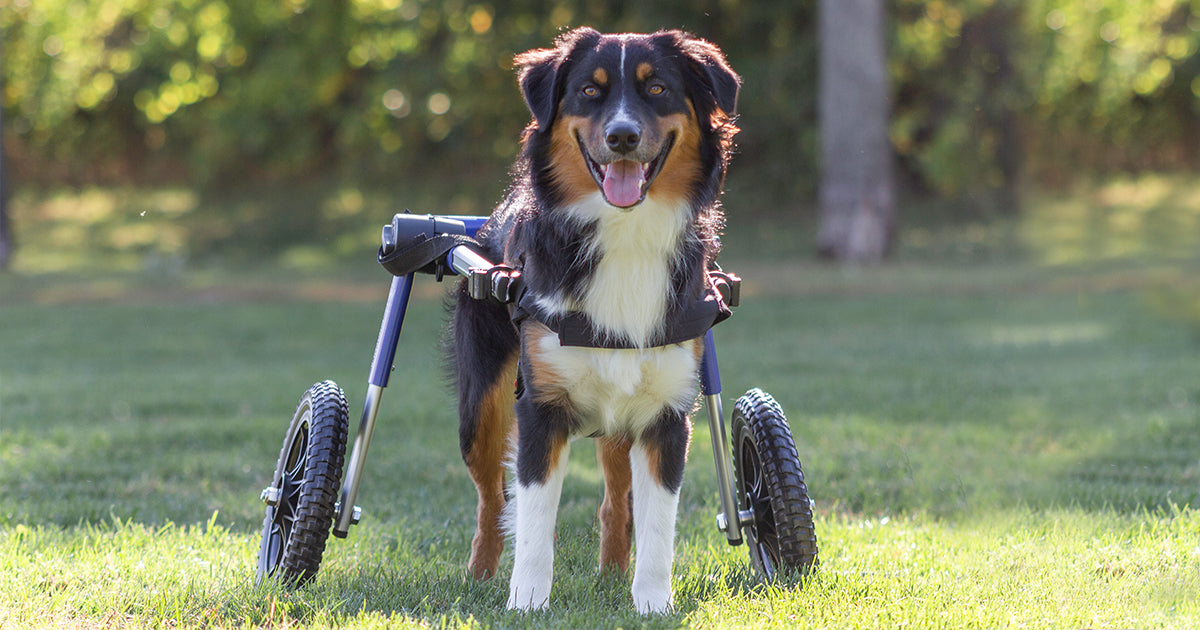Life Expectancy in Dogs with IVDD: How Age, Breed, and Weight Affect Prognosis

Know Your Dog's Risk for Hip Dysplasia
Canine Hip Dysplasia or CHD is a hereditary hip disease. Which means if your dog is a carrier of the genetic marker for CHD, they are at risk for developing hip dysplasia. The good news is that hip dysplasia is a multifactorial disease, which means that not every dog considered “at-risk” will be diagnosed with hip dysplasia.
Dog Breeds At Risk for Hip Dysplasia
Don’t let your dog’s size deceive you, hip dysplasia can occur in any size dog. Although hip problems are more common in big dogs, many smaller breeds are also at risk for hip issues. According to a study by the Orthopedic Foundation for Animals of middle-aged dogs, those born between 2011-2015, Bulldogs and Pugs are the top two breeds at-risk for hip dysplasia.
Large dog breeds most at risk for hip dysplasia:

- German Shepherd
- Rottweiler
- Saint Bernard
- Great Dane
- Neapolitan Mastiff
- American Staffordshire Terrier or Pit bull
- Newfoundland
- Catahoula Hound
- Basset Hound
- Chesapeake Bay Retriever
- Golden Retriever
- Labrador Retriever
Depending on the breed large dogs will require additional care to keep hips healthy and their back legs strong. For example, German Shepherds are at risk for two major mobility conditions, hip dysplasia and degenerative myelopathy. This means German Shepherds are at high risk for hind leg weakness and paralysis later in life. To limit hip problems, German Shepherd dogs should be kept at a healthy weight and stay well exercised to maintain muscle tone. In general, a leaner healthier diet is recommended in all large dogs with hip problems.
When a pet is overweight additional stress and pressure is pressed on their joints which makes hip dysplasia pain and it’s symptoms worse. Dogs with excess weight will have a harder time exercising, standing up, and may not live as long.
Small dogs at risk for hip dysplasia include:
- Pug
- French Bulldog
- English Bulldog
- Norfolk Terrier
- Shih Tzu
- King Charles Spaniel
- Poodle
- Basset Hound
- West Highland Terrier
- Boston Terrier
- Pomeranian
Smaller dogs are prone to joint problems unique to them. Smoosh faced dogs, also known as brachycephalic, are often at risk for joint dysplasia in their elbow, knee and hip which can cause limping. Chondrodysplastic dog breeds, like a corgi, have a long body and short legs which places additional staring on all of their joints. Because their upper body is disproportionately larger than their limbs, even mild hip dysplasia can make everyday mobility difficult.
Is a Dog Hip Brace Beneficial for Hip Dysplasia?
Hip dysplasia is a painful joint condition that can lead to swollen joints and mobility problems. Providing your dog with hip support can help. For pets with mild to moderate hip dysplasia a dog hip brace provides support and pressure to the hip joints to keep them in place and relieve hip pain. Pets in the earliest stages of hip dysplasia deal with lameness caused by their hip pain. The gentle pressure of the brace helps to reduce joint pain and when combined with structured exercise makes it easier for a dog to walk. Canine hip support isn’t a magic pill, but dogs with hip dysplasia will see improvement overtime when worn regularly and combined with rehabilitative exercise.
Dogs with severe hip dysplasia who can not walk on their own, should not use a hip brace. A dog wheelchair is recommended for non-ambulatory pets who are unable to stand or walk on their own.








